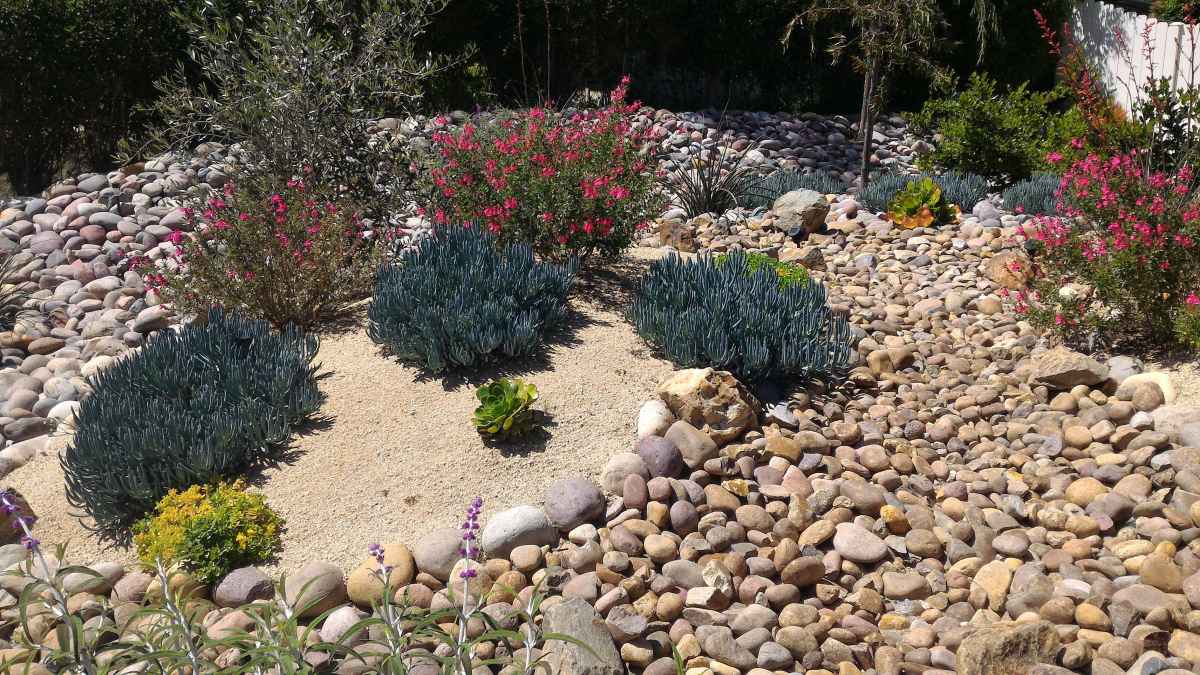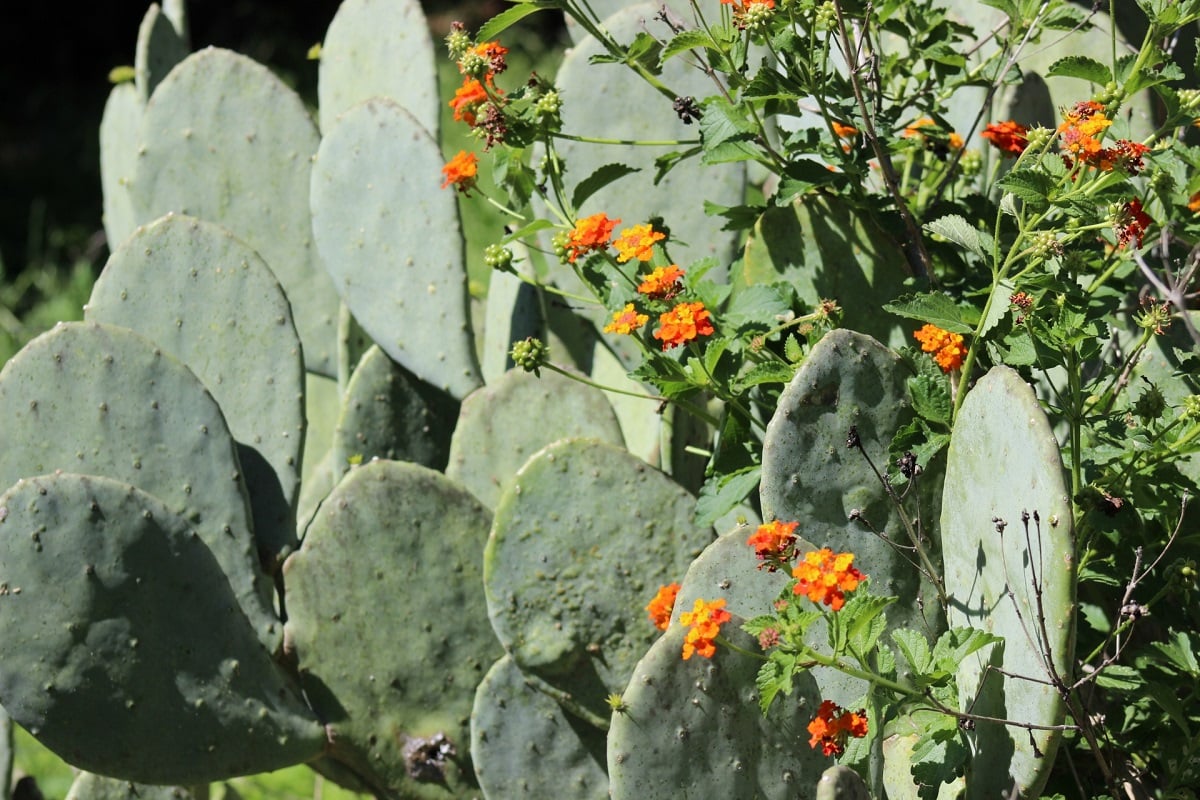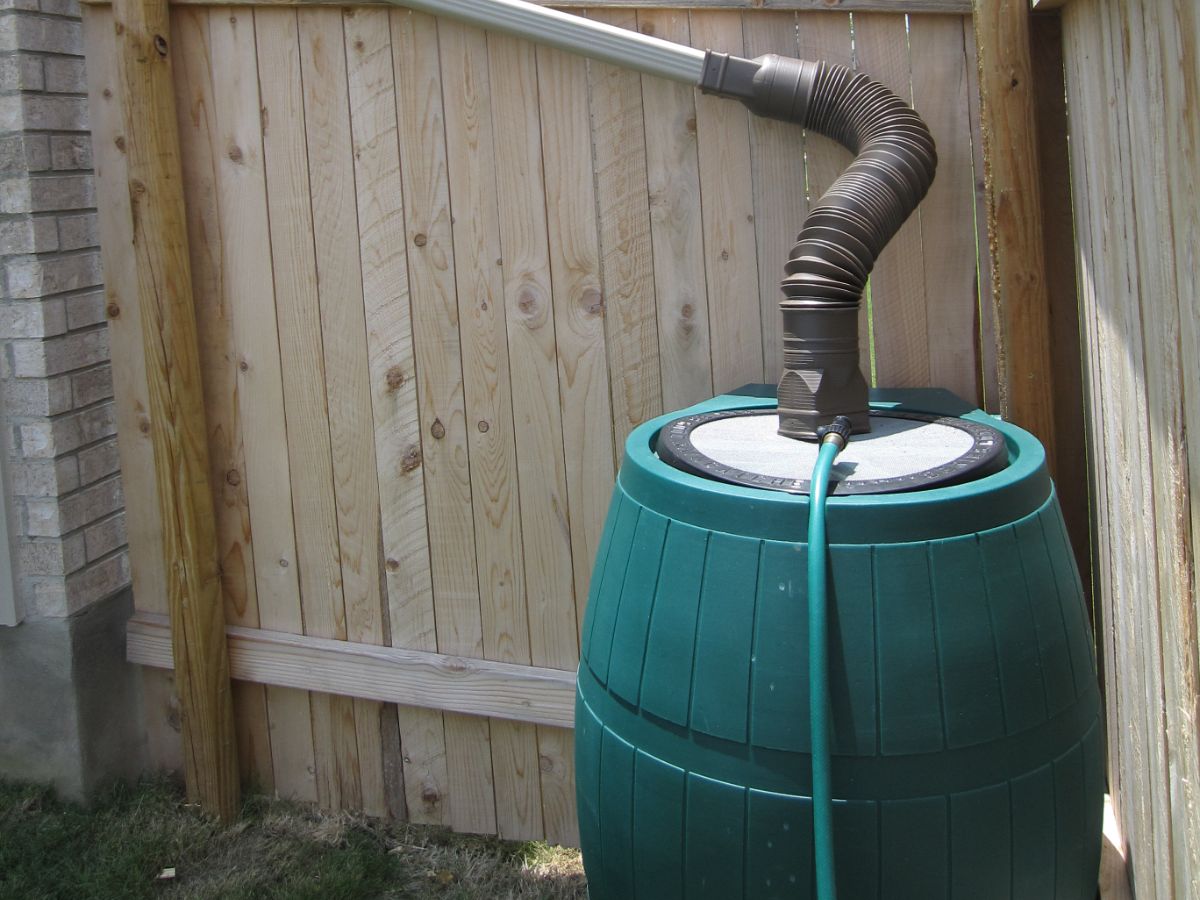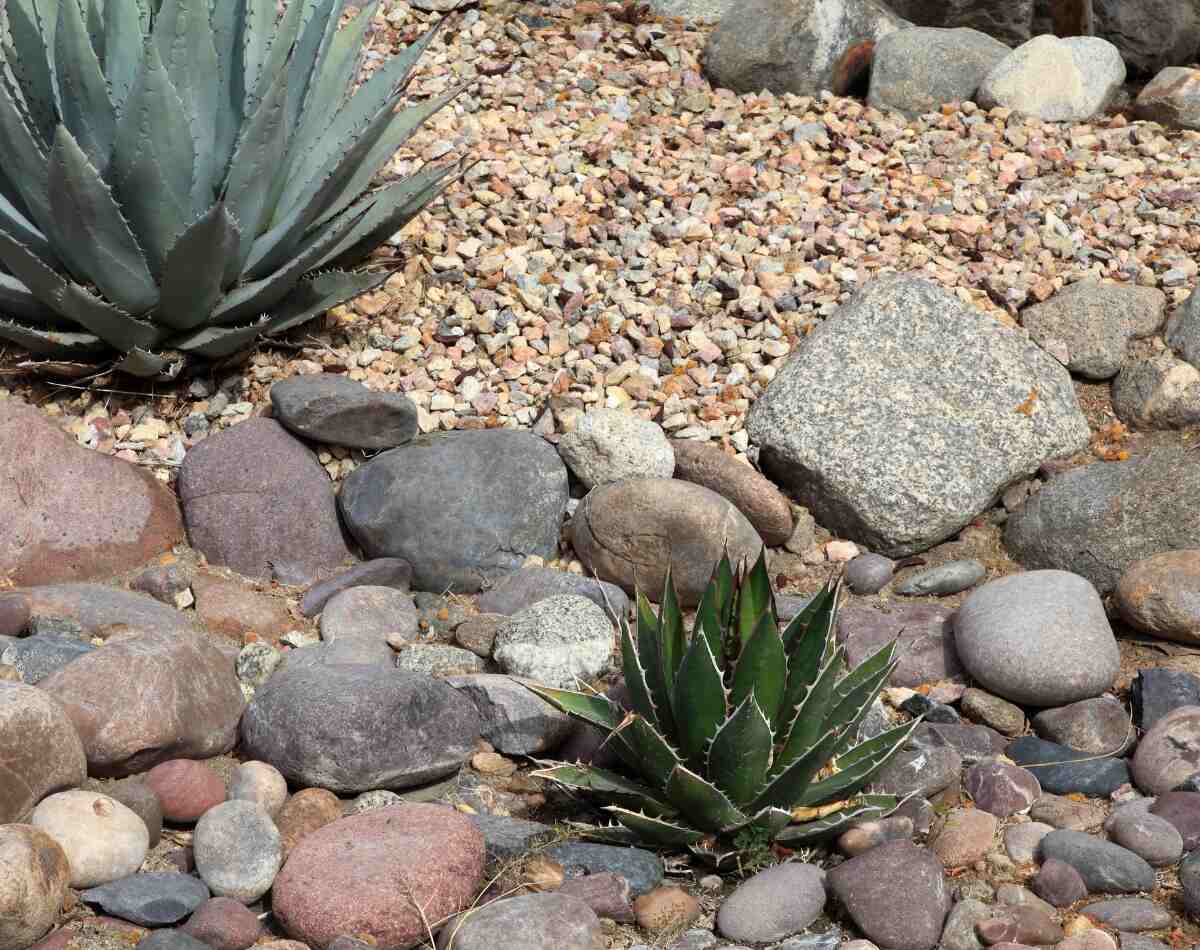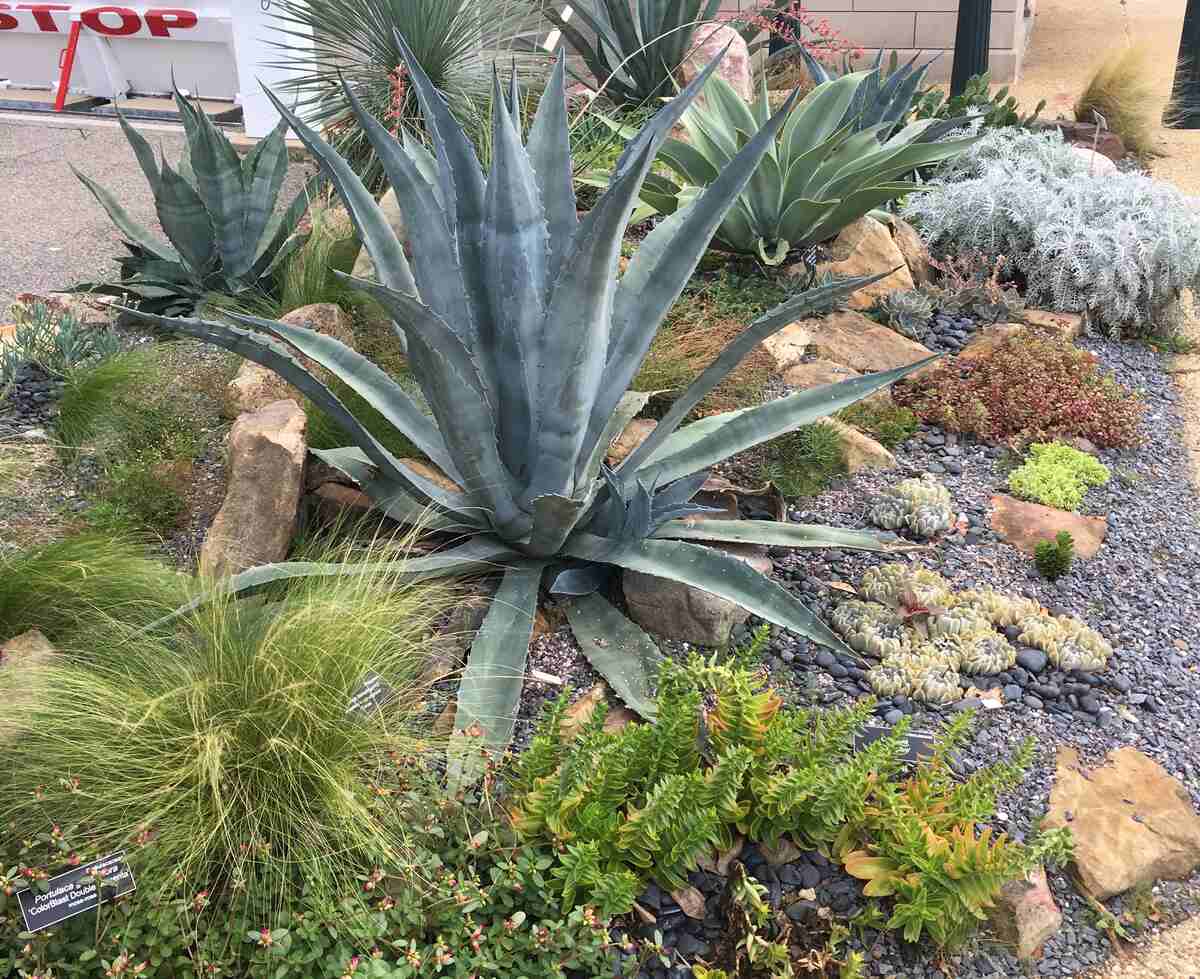
Although lawns are traditionally covered in turfgrass, homeowners living in drought-prone areas might prefer a landscaping alternative that is easier to maintain. Consider xeriscaping, a drought-friendly, low-maintenance landscaping approach.
A xeriscape implements water conservation principles, which include planting native or drought-tolerant plants, installing hardscapes, mulching, and switching to an efficient watering method. Learn from an expert about the 7 principles of xeriscaping and what to consider as you decide if this approach to landscaping is for you.
Learn what xeriscaping is and what you need to get started:
How Xeriscaping Works
Xeriscaping, derived from the Greek word “xeros” meaning “dry,” combined with “landscaping,” is an eco-friendly gardening method that focuses on creating beautiful, drought-resilient landscapes. Xeriscape landscaping was initially introduced by the Denver Water Department in the early 1980s as a solution to reduce water consumption during droughts.
The core concept of xeriscaping involves replacing thirsty grass lawns with drought-tolerant plants, mulch, and rocks and using water-wise irrigation systems. This approach not only conserves water but also encourages biodiversity and reduces water bills. By incorporating a beautiful mix of native grasses, flowers, shrubs, and trees, you can save up to 60% on watering costs.
Pro Tip: If you’re new to xeriscaping, consult a professional landscaper experienced in water-wise designs. They can assess your site, recommend suitable native plants, and create a personalized xeriscaping plan that fits your preferences and climate.
7 Principles of Xeriscaping
Back in 1981, the Denver Water Department defined 7 principles to guide homeowners to create functional xeriscape gardens. Let’s see how these simple and practical guidelines look.
1. Thoughtful Planning and Design
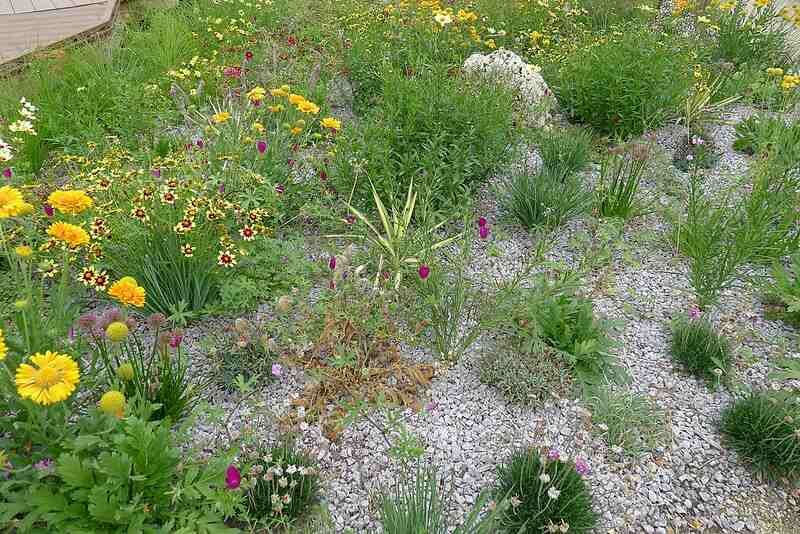
Plan and design the garden with functionality and purpose. A xeriscape shouldn’t be random or spontaneous.
“Evaluate sunlight patterns, soil type, drainage, and existing elements, such as trees, buildings, or slopes. This helps tailor your design to site-specific conditions,” says Chris Blaha, an agriculture technician at NC State University who has taught classes on xeriscaping for the past 7 years and personally installed dozens of xeriscape landscapes.
Here are some ideas to get you started:
- Gravel and rock gardens: Use different sizes, colors, and textures of gravel and rocks. Add cacti, succulents, and other tough plants.
- Cactus gardens: Use various kinds of cacti and succulents to create a desert-like landscape with rocks, gravel, and more sturdy plants.
- Rain gardens: Dig a shallow area in your garden to collect and filter rainwater. Plant xeriscape plants around it.
- Prairie gardens: Use colorful native grasses, wildflowers, and other prairie-like plants.
- Xeriscape lawns: Try low-water grasses like buffalograss and tall fescue for a nice lawn that doesn’t need lots of water.
These are just a few xeriscaping ideas to think about. To succeed, pick the right native plants for your climate. “Native species typically require less water, are more pest-resistant, and support local wildlife,” says Blaha.
See Related:
- Rock Garden Design: Stones, Water, and Plants
- How to Design a Rain Garden
- How to Build a Rain Garden: 6 Steps
2. Soil Improvement
Healthy soil is the foundation of a successful xeriscape garden. Consider the soil type in your yard and which types of plants will thrive in it. Test and amend the soil to ensure proper drainage and water absorption.
Utilizing the right organic fertilizers and soil amendments enhances soil structure and fertility. These components work together to ensure proper drainage, improve plant health, and support the water-efficient nature of xeriscaping. Here are a few to consider:
- Rock dust is fine dust fertilizer made from ground rock pebbles. It improves soil health and fertility.
- Gypsum is a mineral that breaks up compacted soil.
- Compost is decomposed organic matter that is rich in nutrients and beneficial microorganisms. Use it to improve soil structure and fertility. You can prepare compost using our DIY composting guide.
3. Efficient Irrigation System

One of the most significant advantages of xeriscaping is water conservation. By using desert landscape plants and efficient irrigation methods, xeriscaping can reduce the amount of water needed to maintain a landscape by up to 60%.
“Use drip irrigation or soaker hoses to water at the root zone, reducing evaporation and runoff,” says Blaha.
Place the right plants in the right spot based on their water and light requirements. Grouping plants with similar watering requirements together is known as hydrozoning, which reduces water waste and makes it easier to maintain your lawn. To hydrozone, place plants with low-water needs close together, and cluster plants with high-water needs together.
There are additional steps you can take to maintain a green and healthy xeriscape with minimal water usage. Consider the following tips and tricks:
- Avoid watering on windy days: If you use sprinklers, refrain from turning them on in windy conditions. Wind can disperse water away from the soil, resulting in waste.
- Practice deep and infrequent watering: Implementing this method helps plants develop strong, lengthy roots that penetrate deep into the soil, accessing moisture that’s sheltered from the heat. This enhances their drought resistance.
- Opt for early morning or late evening watering: “Water early in the morning or late evening to maximize absorption,” says Blaha. By irrigating during these times, when temperatures are cooler, more water will reach the roots instead of evaporating.
- Harvest rainwater: Barrels, swales, or cisterns are used in some xeriscaping designs to harvest rainwater. Rainwater is often healthier for plants compared to tap water, and it serves as a valuable reserve during extended dry periods.
- Adjust irrigation with seasonal changes: Decrease watering when it rains and increase it during dry spells. This approach prevents overwatering your grass, which can cause plant rot, and ensures your landscape remains beautiful and thriving throughout the year.
See Related:
- The Pros and Cons of a Drip Irrigation System
- How Much Does Drip Irrigation Cost?
- Best Time to Water Your Grass
4. Mulching
Mulch acts like a blanket for your yard by retaining water, preventing your yard from drying out too quickly. By conserving moisture in the soil, mulching also prevents soil crusting.
“Spread 2–4 inches of mulch around plants to retain moisture, suppress weeds, and insulate soil from temperature extremes,” says Blaha.
- Organic mulch is made from organic materials, such as wood chips, bark, grass clippings, dried leaves, pine needles, straw, and newspaper. Over time, organic mulch breaks down and needs to be replaced. The benefit of organic mulch is that it provides nutrients to the soil as it decomposes.
- Inorganic mulch includes materials such as pea gravel, lava rock, river rock, cobblestone, decomposed granite, and other types of rocks that add structure, color, and volume to the landscape. Although you don’t need to replace inorganic mulch, it does not have the nutrient benefits of organic mulch.
See Related:
- Organic vs. Inorganic Mulch: What’s the Difference?
- Mulch Guide: Types, Pro Tips, and Where to Mulch
- Mulch Calculator: How Much Mulch Do You Need?
5. Appropriate Plant Selection

Drought tolerant plants include herbs, shrubs, trees, and wildflowers that need minimal water. They can be native to your area or from similar climates in regions such as Africa, Asia, or the Mediterranean.
Choose xeriscaping plants that suit the climate and soil of your outdoor space. Mix various species to create a rich ecosystem and have drought-tolerant flowers from early spring to late fall.
Here are the main categories to consider:
- Drought tolerant grasses and ground covers: Ground covers and ornamental grasses can replace traditional thirsty lawn grasses to conserve water. Some popular options are buffalograss and fescue grass.
- Shrubs: Shrubs provide structure and create eco-friendly habitats for wildlife. Consider drought-resistant species such as sagebrush, rabbitbrush, and manzanita.
- Cacti and succulents: Succulents and cacti can survive with minimal water. They are common in gravel and rocky gardens and in cactus gardens. Some beautiful examples are San Pedro cactus, red yucca, and beavertail cactus.
- Mediterranean plants: Consider olive trees, lavender, and rosemary if aiming for a Mediterranean style. They are lovely additions and bring a charming fragrance to your home and outdoor space.
Only some drought-tolerant plants are suitable for your area. Consult with a horticulturist or a local nursery expert to find the best xeriscaping plants for your garden. They can also help you amend the soil properly.
6. Limited Turf Areas
Grass drinks up a lot of water, so replacing sections of your lawn with drought-tolerant landscaping, rockbeds, and hardscapes such as patios or walkways will reduce the amount of work and water required to maintain your landscape.
For areas where you still have sections of turfgrass, try replacing them with a hardy drought-tolerant grass such as buffalograss.
7. Proper Maintenance

Ensure regular maintenance of your xeriscape garden. Xeriscaping requires less maintenance due to the use of native, drought-resistant plants, which require fewer fertilizers and pesticides than imported species. However, that doesn’t mean it requires no maintenance.
“Regularly prune, weed, and monitor irrigation systems to ensure optimal performance. Adjust watering as seasons and plant needs change,” says Blaha.
FAQ About Xeriscaping
The average xeriscaping project costs between $15,120 to $18,400 with installation. Pricing differs depending on multiple factors:
• Materials used
• Location
• Climate
• Soil
• Garden size
“Xeriscaping can be costly, especially at the beginning, due to the need to remove existing landscaping, install new irrigation systems, and purchase native plants,” says Blaha. Work with a landscape contractor near you to make the process faster and simpler.
Some regions and municipalities offer incentives, rebates, or tax benefits for property owners who adopt water-saving practices like xeriscaping. “These rebates can help offset the cost of converting a traditional lawn to a water-wise landscape,” says Blaha.
It’s worth checking with your local authorities or environmental agencies to see if such incentives are available in your area.
Yes. Xeriscapes are a low-maintenance option for homeowners in any part of the U.S. Even in areas that receive a lot of rainfall, you can install native plants, water-efficient irrigation systems, and mulch. This will prevent water waste and reduce yard maintenance.
So long as a xeriscape is done correctly, it should not harm the trees in your yard. “It can also be beneficial when done with proper planning and techniques,” says Blaha.
However, careless installation can be detrimental to the health of your trees. “Installing xeriscaping around trees can be harmful if not done correctly, particularly regarding soil and root health,” warns Blaha.
Blaha shares some common risks to watch out for if you are planning to xeriscape a yard with trees:
• Soil compaction
• Mulching around tree trunks
• Insufficient water
• Noxious compounds from construction materials such as concrete
Switch to a Drought-Friendly Landscape
With its various design styles, xeriscaping can be aesthetically pleasing and cost-effective, saving up to 60% in water usage compared to traditional landscaping. Not only will a xeriscape reduce your water bills, it will also decrease the amount of maintenance compared to a standard lawn.
If a thirsty lawn is causing your water bills to skyrocket or you are overwhelmed by the amount of care that a traditional lawn requires, then find a professional landscaper to help you design a drought-friendly xeriscape for your yard.
Sources:
- Chris Blaha, agriculture technician at NC State University Extension, Barco, NC. Personal interview.
- “The Benefits of Xeriscaping: A Beginner’s Guide to Drought-Tolerant Landscaping.” By John Murgel, horticulture expert at CSU Extension. Colorado State University.
- “Xeriscape Colorado.” Colorado WaterWise.
- “Xeriscape Landscaping.” By Bob Neier, Sedgwick County extension agent. K-State Research and Extension.
- “Xeriscape Plans.” Denver Water.
Main Image Credit: Potomacpalms / Wikimedia Commons / CC BY-SA 4.0
